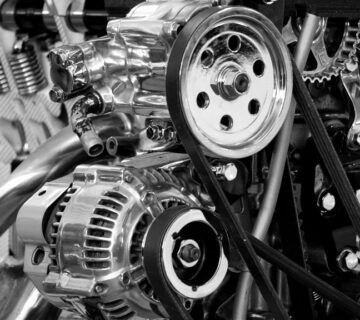By: John C, Operations Manager BRB Ltd.
Are you thinking about installing a new Air Source Heat Pump (ASHP) in your home? Congratulations!
This environmentally-friendly heating and cooling technology not only reduces your carbon footprint but also offers energy-efficient benefits.
However, before diving into the installation process, there are a few crucial factors to consider.
In this blog post, we will explore the key aspects to keep in mind when fitting a new ASHP in the UK.Heat Pump SizingOne of the most critical steps in installing an ASHP is determining the appropriate size for your property.
Hiring a qualified professional to perform a heat loss calculation is essential.
This calculation considers factors such as insulation, room sizes, and the number of occupants.
Accurate sizing ensures optimal performance and efficiency, preventing any potential issues down the line.
Location and PlacementChoosing the right location for your ASHP is crucial to maximize its efficiency and minimize noise disturbances.
Ideally, the outdoor unit should be positioned away from bedrooms, living areas, and adjacent properties to reduce noise levels.
Additionally, consider the accessibility for maintenance purposes and ensure there is enough space for proper airflow around the unit.
Insulation and Energy Efficiency
Before installing an ASHP, it is essential to evaluate your property’s insulation.
Well-insulated homes allow heat pumps to work more efficiently, reducing energy consumption and costs.
Consider any necessary insulation upgrades, such as loft insulation, cavity wall insulation, or double glazing, to maximize the benefits of your ASHP.
Compatibility with Existing SystemsIf you’re replacing an existing heating system, ensure compatibility with your ASHP.
Discuss this with a qualified installer who can assess the compatibility of your current radiators, underfloor heating, or hot water systems.
In some cases, modifications or upgrades may be necessary to integrate your ASHP seamlessly.
Planning Permission and RegulationsWhile most ASHP installations do not require planning permission, it is essential to check local regulations and consider any restrictions.
Consult with your local authority or a reputable installer to ensure compliance with guidelines.
Additionally, consider any noise limitations that may be in place, especially if you live in a listed building or a noise-sensitive area.
Maintenance and ServicingRegular maintenance is crucial to keep your ASHP operating smoothly and efficiently.
Factor in the cost of routine servicing and ensure you have a maintenance plan in place.
Regular maintenance visits will extend the lifespan of your ASHP and help you identify and address any potential issues promptly.
In Conclusion
Investing in a new ASHP is a smart move towards a greener and more energy-efficient home.
By considering these essential aspects, you can ensure a successful and hassle-free installation:
- Heat Pump Sizing
- Location and Placement
- Insulation and Energy Efficiency
- Compatibility with Existing Systems
- Planning Permission and Regulations
- Maintenance and Servicing
Remember, consulting with a qualified professional is vital throughout the process to guarantee optimal performance and long-term savings.
Enjoy the benefits of your new ASHP and contribute to a more sustainable future.
If You’re Thinking About Upgrading To An Air Source Heat Pump, Click Here To Learn More.





